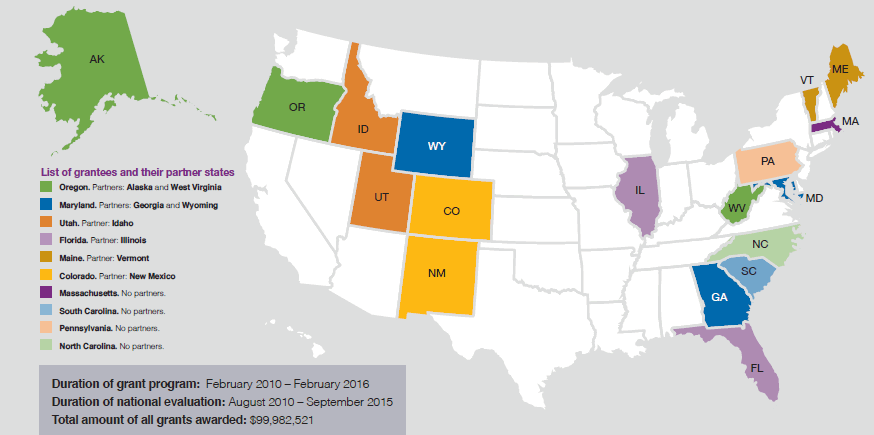The Children’s Health Insurance Program Reauthorization Act of 2009 (CHIPRA) authorized and funded the CHIPRA Quality Demonstration Grant Program to identify strategies for improving the quality of health care for children enrolled in Medicaid and the Children’s Health Insurance Program (CHIP).1 The Centers for Medicare & Medicaid Services (CMS) awarded 10 demonstration grants that ranged from $8.7 to $11.3 million each, funding 18 States that implemented 52 separate projects. The CHIPRA quality demonstration, which ran from 2010 to 2015, was one of the nation’s largest investments of Federal dollars aimed at learning how to improve children’s health and health care.2
The national evaluation of this demonstration grant program, funded by CMS and overseen by the Agency for Healthcare Research & Quality (AHRQ), was conducted by Mathematica Policy Research and its partners, the Urban Institute and AcademyHealth. The purpose of the evaluation was to provide insights into best practices and replicable strategies for improving the quality of health care for children. (Refer to Evaluation Methods at the end of this report for more information.)
Within the broad mandate of the CHIPRA legislation, demonstration States pursued a variety of activities, projects, and approaches. This summary,3 which draws from products produced throughout the evaluation,4 highlights program objectives, the strategies States used, and the lessons learned about:
- Reporting and using the core set of quality measures for children.
- Transforming service delivery to promote quality of care.
- Improving service systems for youth with serious emotional disorders.
- Applying health information technology (IT) for quality improvement (QI).
- Building partnerships to improve quality of children’s health care.
- Using Federal grants to build intellectual capital at the State level.
To illustrate some of the lessons learned, this report includes short descriptions of selected activities implemented.




